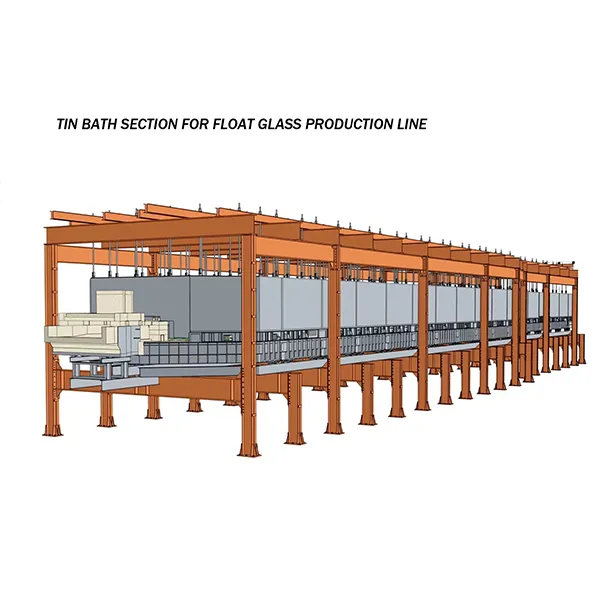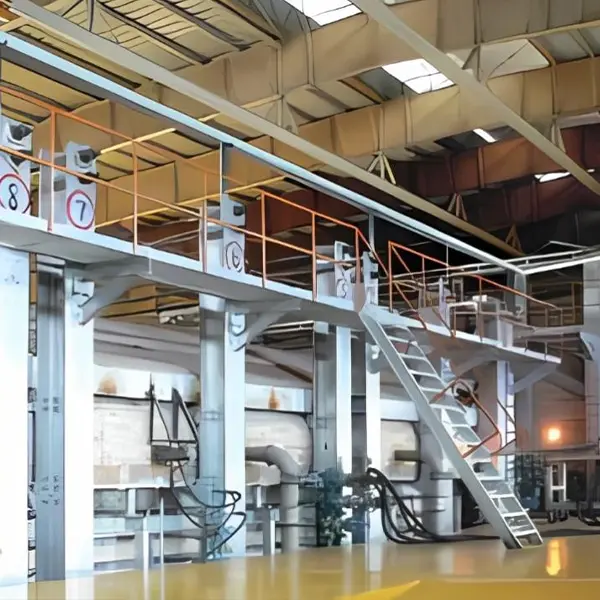Laminatglas: Ett smart val för hållbar arkitektur
Den globala förskjutningen mot hållbar konstruktion kräver smartare materialval. Bland dessa har laminatglas framträtt som en värdefull tillgång i energieffektiv arkitektonisk design. Genom förfinad tillverkning av laminatglas hjälper tillverkare moderna byggnader att minska energiförluster, förbättra inomhuskomfort och stödja gröna certifieringar.
Tillverkning av laminerglas innebär att foga samman två eller flera glaslag med mellanliggande material som PVB eller EVA. Denna process förbättrar inte bara styrka och säkerhet utan optimerar också termisk och solenergiprestanda. När klimatsmart design blir allt vanligare har laminerglas roll i att förbättra energieffektiviteten aldrig varit viktigare.
Termiska prestandafördelar med laminerglas
Minskad värmeföring förbättrar HVAC-effektivitet
Ett av de utmärkande fördelarna med laminatglas tillverkning bidrar till termisk isolering. Mellanlagret mellan glasrutorna hjälper till att minska värmeföringen, vilket innebär att inomhusmiljöer hålls svalare på sommaren och varmare på vintern. Denna termiska barriär stöder direkt HVAC-effektiviteten och minskar frekvensen och intensiteten i uppvärmnings- och kylcykler.
Byggnader med stora glasfasader har ofta problem med värmetillgång eller värmeförlust, men laminerglas erbjuder en balanserad lösning. Istället för att offra estetik eller synlighet möjliggör tillverkning av laminerglas högpresterande fönster som kompletterar energimedveten arkitektur.
Konstanta innetemperaturer året runt
Hur kan laminerglas bidra till en mer stabil inomhusmiljö? Svaret ligger i dess förmåga att minimera temperatursvängningar. Genom att minska påverkan från yttre klimatförhållanden gör laminerglas det möjligt för byggnader att behålla konstanta innetemperaturer. Detta resulterar inte bara i komfort för de som befinner sig där, utan också mätbara minskningar av energikostnaderna.
Tillverkning av laminerglas erbjuder arkitekter flexibilitet när det gäller att anpassa prestandaspecifikationer. Oavsett om det är ett kallt norrlandsklimat eller en het, solig region hjälper skräddarsydda lösningar med laminerglas till att uppnå olika energieffektivitetsmål.
Solkontroll och ljusreglering
Hantering av solvärme med specialiserade beläggningar
Vid produktion av laminatglas kan speciella solskyddsbeläggningar appliceras för att styra ljus- och värmetransmission. Dessa beläggningar blockerar skadlig infraröd strålning samtidigt som synligt ljus tillåts att passera igenom, vilket minskar bländning och överskottsvärme. Detta är särskilt användbart i kontorsbyggnader eller bostadshöghus där oupphördlig solljus kan leda till överhettning.
Minskning av solvinst mot laminatglas minskar behovet av luftkonditionering och sänker den totala energiförbrukningen. Det förbättrar också komforten hos personer i byggnaden genom att minska bländningsrelaterad obehag och ögontrötthet.
Maximera dagsljus utan överhettning
Dagsljusinsläpp är en vanlig strategi i grön byggnadsdesign. Den minskar behovet av konstgjord belysning och förbättrar välbefinnandet. Men finns det inte en avvägning mellan naturligt ljus och värmeeffekt? Laminatglas löser detta problem genom att släppa in dagsljus samtidigt som solens värmelast minimeras.
Tack vare innovationer inom laminatglasproduktion kan arkitekter ange glas som stöder maximal dagsljus utan att öka energiförbrukningen. Detta skapar miljöer som är både energieffektiva och visuellt tilltalande.

Stöd för hållbara byggnadscertifieringar
Uppfyllande av LEED- och Green Building-kriterier
Laminatglasproduktion anpassar sig perfekt till kraven i globala hållbarhetscertifieringar såsom LEED, WELL och BREEAM. Dess termiska isolering, solkontroll och akustikprestanda bidrar till flera kreditkategorier inom systemen för grön byggnadsbedömning.
Genom att integrera laminatglas i byggnadsdesign kan utvecklare erhålla poäng relaterade till energieffektivitet, komfort för användare, dagsljus och materialtransparens. Detta förbättrar inte bara ett projekts miljöegenskaper utan också dess marknadsvärde.
Minskar byggnaders klimatpåverkan
Alla energisparende material bidrar till långsiktiga minskningar av emissioner. Laminerat glas sänker byggnadens driftenergibehov, vilket direkt översätts till reducerade växthusgasutsläpp över tid. Särskilt när det kombineras med energieffektiva fönsterkarmar blir laminerat glas en viktig del av strategier för lågkolonstrukturer.
Tillverkare som är involverade i produktion av laminerglas anammar också grönare metoder själva – såsom råvaror med låg miljöpåverkan och återvinning – vilket gör hela produktens livscykel mer hållbar.
Ytterligare fördelar med laminerglas
Förbättrad ljudisolering för stadsnära effektivitet
Energieffektivitet handlar inte bara om temperatur. Komfort påverkas också av buller, särskilt i stadsmiljöer. Laminerglas erbjuder utmärkt akustisk isolering tack vare sin mellanliggande struktur, vilket hjälper till att minska ljudöverföringen utifrån. I kontorslokaler, skolor och sjukhus skapar detta en tystare och mer produktiv arbetsmiljö.
Denna akustiska fördel kräver inte att man offrar termisk prestanda. Laminerad glasproduktionsteknik gör det möjligt för båda egenskaperna att existera tillsammans i en enda glass produkt.
Säkerhet och lång livslängd förbättrar den övergripande byggnadseffektiviteten
Fördelar med energibesparing är inte de enda. Laminerat glas är känt för sin säkerhet. Det håller ihop vid påverkan, vilket minskar risker för skador och förbättrar byggnadssäkerheten. Detta slitstarka glas innebär också färre utbyten och mindre materialavfall.
Denna långlivade egenskap minskar underhållsintervall och behovet av utbyte – vilket ytterligare stöder en hållbar drift av byggnader. På sikt bidrar laminering av glas till både funktionalitet och ekonomisk effektivitet hos en byggnad.
Vanliga frågor
Hur bidrar laminering av glas till energibesparing i byggnader?
Laminerat glas minskar både värmeöverföring och solvärmeupptagning, vilket sänker behovet av uppvärmning och kylning. Detta förbättrar byggnadens totala energiprestanda.
Är laminering av glas mer effektivt än dubbelglazing vad gäller termisk isolering?
Även om båda alternativen erbjuder isolering, kan laminatglas överträffa standard dubbelglasytor när det kombineras med solskyddande beläggningar och lämpliga mellanlager. Det bidrar också till ljudisolerings- och säkerhetsfördelar.
Kan laminatglas anpassas för olika klimat?
Ja. Vid tillverkning av laminatglas kan tillverkare justera glasets egenskaper för heta, kalla eller varierade klimat genom olika beläggningar och typer av mellanlager.
Stöder laminatglas dagsljusinsläpp utan att orsaka överhettning?
Absolut. Med rätt beläggningar tillåter laminatglas naturligt ljus samtidigt som värmefrångången minimeras, vilket gör det idealiskt för dagsljusstrategier i energieffektiva byggnader.
 EN
EN
 AR
AR
 BG
BG
 HR
HR
 CS
CS
 DA
DA
 NL
NL
 FI
FI
 FR
FR
 DE
DE
 EL
EL
 HI
HI
 IT
IT
 JA
JA
 KO
KO
 PL
PL
 PT
PT
 RO
RO
 RU
RU
 ES
ES
 SV
SV
 TL
TL
 IW
IW
 LV
LV
 LT
LT
 SK
SK
 SL
SL
 UK
UK
 VI
VI
 ET
ET
 HU
HU
 MT
MT
 TH
TH
 TR
TR
 FA
FA
 MS
MS
 SW
SW
 GA
GA
 AZ
AZ
